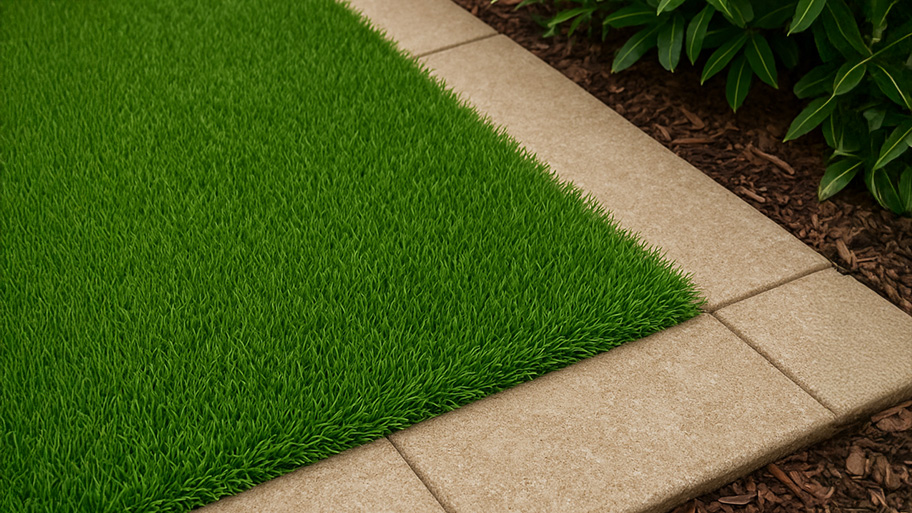
We break down the cost to remove bamboo, which is slightly higher than other forms of tree removal. It's a difficult DIY task because of bamboo's hardy underground roots.
No attached spark plug, no problem


There’s nothing better than the smell of fresh-cut grass. But wouldn’t that experience be even more enjoyable if you knew that you were saving money while you trimmed the lawn?
That’s exactly what you stand to gain by annually tuning up your lawn mower. Your engine will perform better, you’ll spend less on gas to cut your lawn, and you’ll add years of life back to your device, which could save you hundreds, if not thousands, of dollars.
In this guide, learn how to do maintenance on a lawn mower in six steps, as well as the precautions one must take to do so safely.

Tuning your device is a great way to get your mower ready for spring, save money, and keep your device running smoothly. However, some precautions are necessary, so make sure you feel comfortable tackling the job before you start.
During most lawn mower tuneups, you’ll:
Change the oil
Replace the spark plug
Change (or at least gently clean) the air filter
If the lawn mower blade needs replacing or additional steps need to be taken (such as fixing the engine), getting a quote from a local lawn mower repair service might make sense.
All lawn mowers need tuneups, but the process looks a little different for each model. Parts may be in specific places or locked behind other parts on your specific unit. Look at your owner’s manual first to make sure you know all the points you’ll need access to.
You’ll need to know where:
Your spark plug’s location
Your air filter’s location
Your oil drains from (either the bottom or from the top)
You can add new oil (usually on top)
If you don’t have it, you can likely find a PDF version of your manual online or in video form.
A spark plug ignites the fuel-and-air mixture inside your engine to start the device. Some newer lawn mowers have push-to-start features, so to be on the safe side (and avoid accidentally starting your mower while you’re working on it), disconnect the spark plug to avoid any lawn mower mishaps.
To disconnect it, unscrew the plastic wire and cover it over your plug. For now, this is all you need to do with your spark plug. You’ll replace it at the very end.
With a rag or paper towels and some grease-cutting soap mixed into a small bucket of water (a few drops of soap will do), clean the exterior of your mower, including the base, the mower deck, and the handles.
Avoid tilting it on its side, for now. You can scrub away grass and wipe down the bottom a few steps from now.
A clean air filter makes your lawn mower’s engine run smoother and even preserves gasoline to help you save money. You can purchase lawn mower filters for $5 to $12 at home improvement stores. Your manual will tell you which size or brand you need to buy for it to fit correctly.
Pop the plastic cover off to your air filter or use a screwdriver, and remove the current filter. (The filter is usually next to the carburetor on your mower.)
If it’s still white or looks pretty new, you may be able to simply pull off any small pieces of debris and keep using it. If it’s dirty, you’ll need to install a new one.
Before draining lawn mower engine oil, remove any gasoline from your device. This way, when you tilt the device, there’s no chance that gas will leak out.
Most units have a screw cap on top that holds your motor oil. You’ll need to simply remove this screw cap by hand, then tilt your lawn mower on its side to drain all the excess oil into a pan or bucket. Give it at least five minutes so it can drain properly.
If you notice pieces of metal in your engine oil, this could signal a severe problem with the engine that would warrant you fixing the engine or even replacing the device.
When adding new oil, add half of the 18 oz canister ($5 to $10 at home improvement stores), then use your dipstick to measure how much more you need. Most devices will use the whole bottle, but you may only need three-quarters or slightly less than a full bottle.
While your engine is tilted and draining oil, check the blade for knicks, dents, or damage to the blade underneath. If your lawn mower is a few years old and has never been serviced, it’ll likely need a new mower blade. If it’s totally destroyed, you may need to go through the checklist to decide whether to repair or replace your lawn mower.
Blades cost $20 to $50 online or at home improvement stores. Once again, your owner’s manual will tell you which size your unit needs.
A single bolt holds down most blades, so you’ll likely need a 5/8-inch wrench to pry it loose. Securely tighten the new blade before tilting the lawn mower back to a stand.
Finally, use either a socket wrench or spark plug wrench tool (the latter costs around $10). A firm counter-clockwise turn should loosen it, then you can unscrew it and remove.
On the base of your spark plug, you’ll find a code, which you’ll need to match the correct replacement spark plug for your mower. Install the new spark plug, giving it a firm turn to secure it in place.
You should replace spark plugs biannually.
If dealing with engine oil and gas makes you nervous, or you simply know your device needs a major overhaul to get it back in good condition, hiring a pro to tune up your lawn mower might make sense.
Maybe this year you hire a pro to get the more complex jobs done, then every year going forward, you tackle the more routine (air filter, cleaning, oil replacement) jobs by yourself. However you choose to do it, you’re investing in the life of your engine and saving yourself money by preserving your lawn mower.
From average costs to expert advice, get all the answers you need to get your job done.

We break down the cost to remove bamboo, which is slightly higher than other forms of tree removal. It's a difficult DIY task because of bamboo's hardy underground roots.

Growing plants with a hydroponic gardening water system can be a big investment. To know how much it costs to build a hydroponic garden, consider the system, technology, size, and whether you hire a pro. This guide will help calculate costs.

Looking to step up your golf game without leaving your property? This guide details backyard putting green costs to help you decide if this project is worth it.

If you need to get rid of a bush, here’s how to handle this project in a few simple steps. Follow our step-by-step instructions.

The right landscaper can transform your property. Learn how to hire a landscaper who will be the best fit for your landscaping project.

Opting for a natural turf alternative may have its perks, but the problems with artificial grass can outweigh the good. Get to know these common issues before installing.